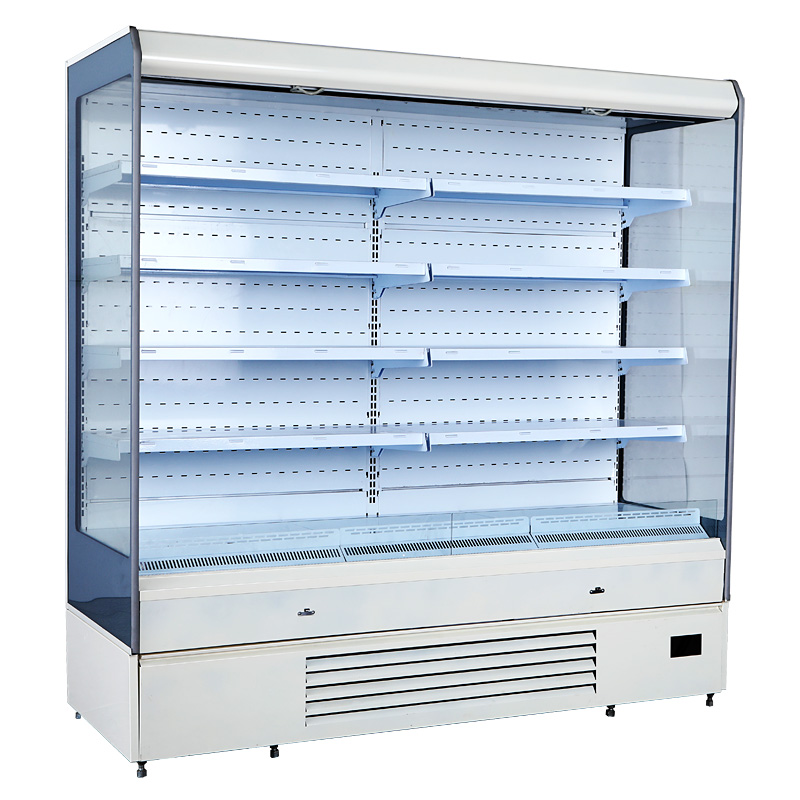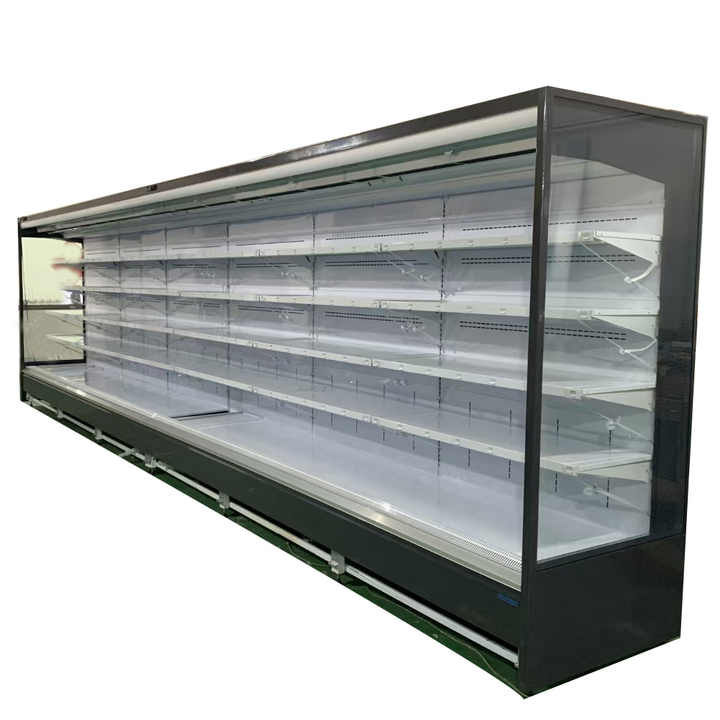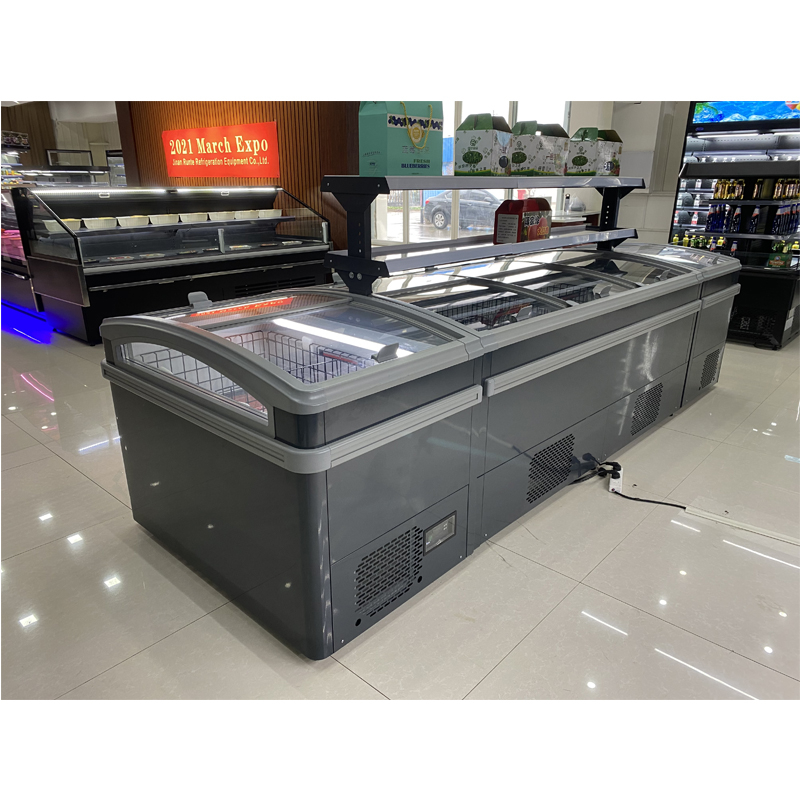Introduction

In the bustling world of supermarkets, one of the unsung heroes is the freezer. These large, often humming units are a cornerstone of modern grocery shopping, playing a crucial role in preserving food, expanding product variety, and meeting the diverse needs of consumers. Supermarket freezers are not just simple storage units; they are sophisticated pieces of equipment that have revolutionized the way we buy, store, and consume food.
The Technology Behind Supermarket Freezers
Cooling Systems

At the heart of every supermarket freezer is a complex cooling system. Most modern freezers use vapor compression refrigeration systems. This system works by compressing a refrigerant gas, such as hydrofluorocarbons (HFCs) or hydrocarbons. When the gas is compressed, it heats up. This hot gas then passes through a condenser, where it releases heat to the surrounding environment and condenses into a liquid. The liquid refrigerant then flows through an expansion valve, where it rapidly expands and cools down. This cold refrigerant is then circulated through the evaporator coils inside the freezer, absorbing heat from the air and the stored products, thus cooling the interior of the freezer.
Temperature Control
Accurate temperature control is essential for supermarket freezers. Different types of frozen foods require specific storage temperatures to maintain their quality and safety. For example, ice cream should be stored at around -18°C (-0.4°F) to keep its smooth texture, while frozen meats are best stored at even lower temperatures, around -20°C (-4°F) or below. Modern freezers are equipped with advanced thermostatic controls that can precisely monitor and adjust the temperature. These controls can sense even slight temperature fluctuations and activate the cooling system or defrost cycles as needed to maintain the optimal temperature.
Defrosting Mechanisms
Over time, frost can build up inside freezers, which can reduce their efficiency and affect the quality of the stored products. To address this issue, supermarket freezers are equipped with defrosting mechanisms. There are two common types of defrosting: manual and automatic. In manual defrost freezers, the staff needs to periodically turn off the freezer and allow the frost to melt. This is a time-consuming process and can disrupt the storage conditions. Automatic defrost freezers, on the other hand, use a heating element to melt the frost at regular intervals. The melted frost is then drained away, and the freezer returns to its normal operating temperature.
The Importance of Supermarket Freezers in Food Preservation
Extending Shelf Life
One of the primary functions of supermarket freezers is to extend the shelf life of food products. By freezing food, the growth of microorganisms, such as bacteria, yeast, and mold, is significantly slowed down. This is because the low temperatures inhibit their metabolic activities. For example, fresh fruits and vegetables can spoil within a few days at room temperature, but when frozen, they can be stored for months without significant loss of quality. Frozen meats can also be kept for much longer periods, reducing food waste and ensuring a stable supply of protein.
Preserving Nutritional Value
Contrary to popular belief, freezing can actually help preserve the nutritional value of many foods. When fruits and vegetables are harvested, they start to lose their nutrients over time. Freezing them at their peak ripeness can lock in many of the vitamins, minerals, and antioxidants. For example, frozen spinach can contain just as much vitamin C and iron as fresh spinach, as long as it is properly stored and cooked.

Maintaining Food Quality
Supermarket freezers also play a crucial role in maintaining the quality of food products. By keeping the temperature constant and low, they prevent the formation of ice crystals that can damage the cell structure of foods. This is especially important for delicate items like ice cream and frozen pastries. High-quality freezers use technologies such as air circulation systems to ensure that the temperature is evenly distributed throughout the unit, preventing hot spots and cold spots that could affect the quality of the products.
Product Variety in Supermarket Freezers
Frozen Foods
The freezer section of a supermarket is a treasure trove of convenience foods. From frozen dinners and pizzas to ready-to-cook meals and snacks, there is a wide variety of options available. These frozen foods are not only convenient for busy consumers but also offer a great way to try different cuisines and flavors. For example, a consumer can easily find frozen Indian samosas, Chinese dumplings, or Italian ravioli in the freezer section.
Frozen Produce
In addition to frozen foods, supermarket freezers also offer a wide range of frozen fruits and vegetables. This is especially beneficial for out-of-season produce. Consumers can enjoy strawberries in the winter or asparagus in the fall by simply reaching for the frozen versions. Frozen produce is often picked at the peak of ripeness and flash-frozen, which helps retain its flavor and nutritional value.
Frozen Meats and Seafood
The freezer section is also a great place to find a variety of frozen meats and seafood. Consumers can choose from different cuts of beef, pork, and chicken, as well as a wide range of seafood options, such as shrimp, salmon, and tuna. Frozen meats and seafood are often pre-packaged and portioned, making it easy for consumers to plan their meals and control their portion sizes.
Energy Efficiency and Environmental Considerations
Energy Consumption
Supermarket freezers are significant energy consumers. The constant operation of the cooling system requires a substantial amount of electricity. To address this issue, many modern freezers are designed with energy-efficient features. For example, some freezers use LED lighting instead of traditional incandescent bulbs, which consume less energy and produce less heat. Additionally, advanced insulation materials are used to reduce heat transfer from the outside, minimizing the workload of the cooling system.
Refrigerant Selection
The choice of refrigerant in supermarket freezers also has environmental implications. Some traditional refrigerants, such as chlorofluorocarbons (CFCs) and hydrochlorofluorocarbons (HCFCs), have been found to have a high ozone depletion potential and contribute to global warming. As a result, many countries have phased out these refrigerants in favor of more environmentally friendly alternatives. Hydrofluorocarbons (HFCs) have been widely used as a replacement, but they also have a significant global warming potential. In recent years, there has been a growing trend towards using natural refrigerants, such as ammonia, carbon dioxide, and hydrocarbons, which have a much lower environmental impact.
Challenges Faced by Supermarket Freezers
Maintenance and Repairs
Supermarket freezers require regular maintenance to ensure their optimal performance. This includes cleaning the condenser coils, checking the refrigerant levels, and inspecting the seals and gaskets. However, maintenance can be a challenge, especially in large supermarkets with multiple freezers. Any breakdown or malfunction of a freezer can result in significant losses, as the stored products may spoil. Therefore, it is essential for supermarkets to have a well-planned maintenance schedule and a reliable repair service.
Space Constraints
Another challenge faced by supermarket freezers is space constraints. As supermarkets try to offer a wider variety of products, the demand for freezer space continues to grow. However, fitting large freezers into a limited store layout can be difficult. Some supermarkets have to make difficult decisions about which products to stock in the freezer section and how to optimize the use of the available space.
Future Trends in Supermarket Freezers
Smart Freezers
The future of supermarket freezers lies in the development of smart technologies. Smart freezers are equipped with sensors and connectivity features that allow them to communicate with the supermarket’s management system. These sensors can monitor the temperature, humidity, and product levels inside the freezer. The data collected can be used to optimize the operation of the freezer, such as adjusting the cooling cycle based on the load or predicting maintenance needs. Smart freezers can also provide real-time information to the store staff, enabling them to manage the inventory more efficiently.
Sustainable Design
As consumers become more environmentally conscious, there will be an increasing demand for sustainable supermarket freezers. This includes the use of more energy-efficient components, such as variable-speed compressors and improved insulation materials. There will also be a greater focus on using natural refrigerants and reducing the overall environmental impact of the freezer. In addition, supermarkets may start to explore ways to recycle or repurpose old freezers to minimize waste.
Improved Product Display
In the future, supermarket freezers are likely to feature improved product display options. This could include the use of transparent doors that allow consumers to see the products without opening the freezer, reducing heat loss. There may also be more innovative ways to display products, such as using rotating shelves or illuminated displays to make the products more attractive and accessible.
Conclusion
Supermarket freezers are an integral part of the modern grocery shopping experience. They play a vital role in preserving food, expanding product variety, and meeting the needs of consumers. While they face challenges such as energy consumption and maintenance, the future looks promising with the development of smart technologies and sustainable design. As the food industry continues to evolve, supermarket freezers will undoubtedly continue to play a crucial role in ensuring the availability of high-quality, safe, and convenient food products.
